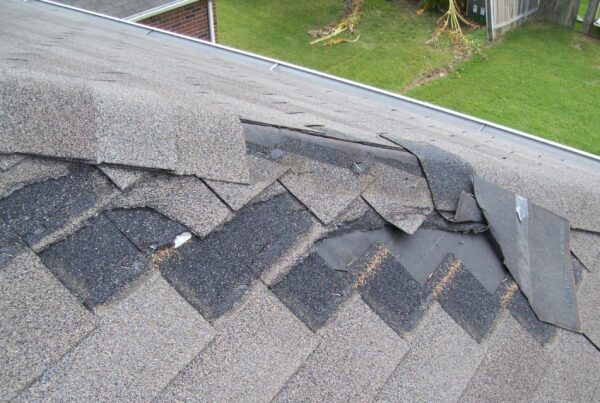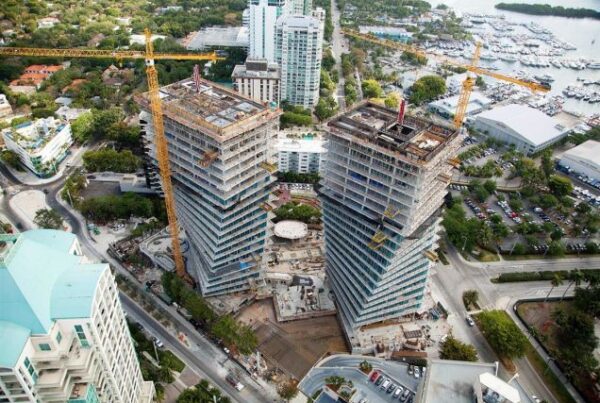It has been about 15 years since NABIE made an extensive attempt to take the pulse of the building inspection engineering industry. That original study took place when the internet was still in its infancy, and the wealth of data available today simply was not there for the taking.
Much has changed in those years, including a huge boom in housing that ultimately collapsed, along with much of the economy, starting in 2007. But over those years a wealth of data was amassed that may prove useful to understanding trends in, and the future of, building inspection engineering.
The U. S. Census Bureau conducts an economic census of businesses in the country every 5 years. The next is due to take place in 2012. The Census folks also craft economic sectors in a very careful way so that meaningful statistics and comparisons can be made. Other economic research entities also evaluate trends in sectors of the economy and sometimes that data can help fill in the “gaps” that occur from an economic assessment by the Census Bureau every 5 years.
The U. S. Department of Labor (DOL) earlier this year contacted NABIE in connection with a survey it was planning to undertake to obtain a better understanding of “building inspection engineering.” Recognize that “building inspection” is a category within the North American Industry Classification System (NAICS) sector for Professional, Scientific, and Technical Services. Both engineering and architecture are within this sector as well. It seems the DOL may, in fact, be starting to realize the differences between building inspection and building inspection engineering.
However, for now, all data applicable to the examination of buildings is considered to be within the sector called building inspection services. This sector of the economy is defined below:
This industry comprises establishments primarily engaged in providing building inspection services. These establishments typically evaluate all aspects of the building structure and component systems and prepare a report on the physical condition of the property, generally for buyers or others involved in real estate transactions. Building inspection bureaus and establishments providing home inspection services are included in this industry.
With the above as a backdrop, some of the statistics that NABIE has uncovered from a recent examination of the data are offered below. Because our work crosses over between what might be defined as building inspection, but may also includes elements of engineering as defined within NAICS, we present data applicable to both professions. Data was also uncovered for architecture, though it is not presented here due to space limitations.
But before we examine some of the data, consider the following:
- Based on current estimates there are about 200,000 actively practicing PEs in the country (of a total of about 450000 licensed professional engineers)
- Extrapolating from government data, the average home in the U.S. is about 2000 square feet
- U.S. Department of Housing and Urban Development (HUD) currently places the typical cost for a building inspection in the range of $300 to $500
Keep in mind that the preponderance of building inspection work done in the U.S. involves single family housing, so results are necessarily skewed toward that market. As a rule, it appears inspection of residential housing is valued by the market at about 15 to 25 cents per square foot.
An additional consideration in this discussion stemmed from the recent NABIE Board of Directors meeting in Philadelphia. During the meeting one of our directors reported an instance of a 600000 square foot complex in his market being inspected for a fee of $2,400.00 (yes you are reading that correctly!). His observation was that it is impossible to compete with such a fee quote, and simply passes on such situations. But clearly they are becoming more common, as his observation is not the first heard by me.
So what does some of the government and private data show us?
Average Fees for an Inspection (calculated from data presented on number of employees and revenues, and consistent with HUD estimates)
- 1997; $295
- 2002; $370
- 2007; $449
- 2010; $332
Average Annual Income for “Engineers” vs. “Inspectors”
1997 2002 2007 2010
Engineers $48400 $57900 $73500 $79600
Inspectors $27700 $32100 $38700 $29200
Hourly Multipliers (calculated from revenue and wage values)
Note: Hourly multipliers are important because they help a practice set the relationship between what employees earn versus the hourly rates charged to clients, the difference addressing various overheads.
1997 2002 2007 2010
Engineers 2.5 2.3 2.6 2.2
Inspectors 2.7 2.9 2.9 2.8
Revenue Generated per Employee
1997 2002 2007 2010
Engineers $120800 $136100 $191900 $175800
Inspectors $73700 $92500 $112300 $83100
Number of Establishments Providing Services
1997 2002 2007 2010
Engineering 52500 55300 58400 147400
Inspection 2800 4100 5800 16300
Size of Pool of Employees
1997 2002 2007 2010
Engineers 730000 859800 977000 995300
Inspectors 8700 14200 16300 27000
Employees per Establishment
1997 2002 2007 2010
Engineers 14 16 17 7
Inspectors 3 4 3 2
Presenting this information is done for several reasons. First as entrepreneurs in difficult economic times, we must all put our “business” hats on and carefully evaluate just what is happening in our industry. The wealth of data available today makes that job easier, but it is still a job to do.
Secondly, we can see that firm size for both engineers and inspectors has dropped over at least the last three years…and is likely a continuing trend. Ask yourself where those down-sized folks are going and you may have an indication of why there is a considerable uptick in the number of establishments providing engineering and inspection services in a weak market. A down sized engineer or inspector may branch out on his / her own adding more competition to an already weak market.
Third, the hourly multiplier analysis conveys some important information. Although the engineering multipliers do show some fluctuation, they average out over the four periods of observation at 2.4, close to the traditional 2.5 associated with consulting engineering.
The inspection multiplier is a bit of a different situation as I see it. With the upper end of the average inspection fee approaching $500, a built in limit occurs for inspector compensation. It appears the inspector is valued at about 35% of the cost of the inspection.
This phenomenon is what I have come to call the “commodity aspect” of inspection services versus what is clearly an hourly rate charge when it comes to professional engineering services.
Ultimately, resolving these economic issues in a way that keeps inspection engineering practices competitive, profitable, and viable will require real business acumen. The solutions you enact for your own practices can be more quickly achieved than any that can come at the level of engineering societies or state regulatory bodies.
As NABIE increases our web presence, consider bringing some of these discussions to the closed group on Linkedin, or emailed into NABIE. Thoughts and comments maybe useful to other members and may also serve as the impetus for new initiatives within the organization. Membership and member services remain as top priorities for NABIE officers and directors alike. But we all are facing some unchartered territory here and input from all may be key to forging ahead.
*This article had been posted in the Fall 2011 edition of The Examiner.


